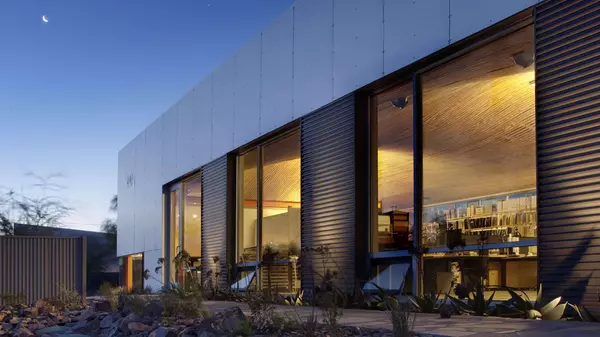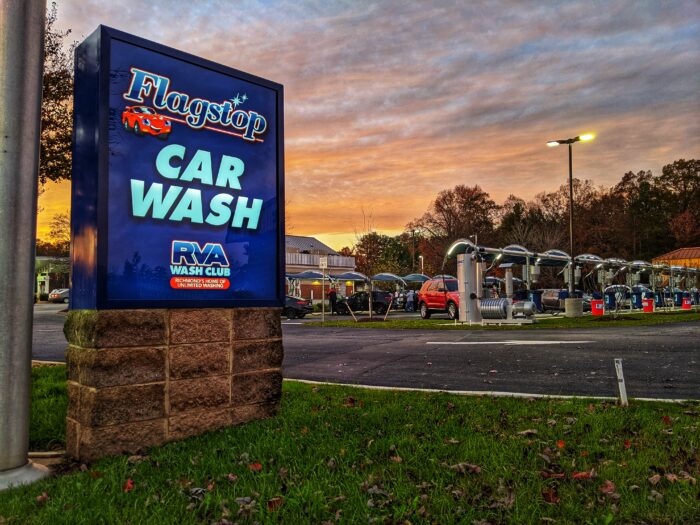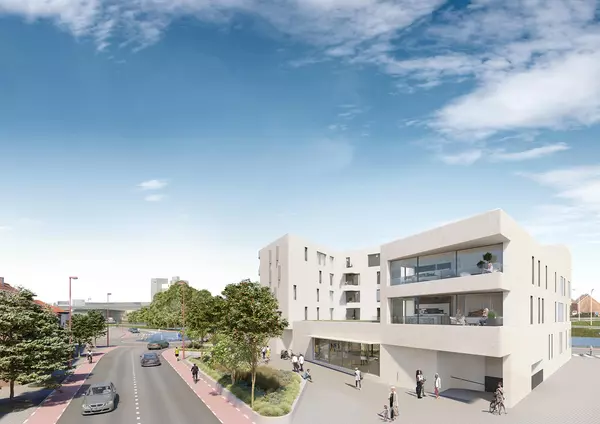Slipek: Five blocks of West Grace have become VCU’s ‘campus Main Street’ (Guest Commentary)
It’s April. College-bound high school seniors are locking in where they’ll be spending their freshman year.
If it were a beauty contest, University of Richmond might be the choice since in 2024 the Princeton Review anointed its campus as the nation’s most beautiful. This year’s Review, in a poll of 160,000 students nationwide, ranked UR the second most beautiful after University of San Diego, with Bryn Mawr College in third place.
Recently, strolling across Virginia Commonwealth University’s Monroe Park campus I wondered if its grounds had been considered for lists of most attractive campuses. Over a century, VCU’s campus didn’t evolve intentionally as had UR or, say, the University of Virginia. Its growth in the Fan District, and more recently downtown, has followed (and been restricted by) the city’s tightly configured street grid. And the school’s architectural history is one of adaptation – repurposing former Gilded Age mansions, faded apartment buildings, abandoned churches, and even a former modern supermarket to institutional use. New buildings are wedged in as funding and available sites allow.
But VCU’s Monroe Park campus is not without unique charms. Most of the grand old residences in West Franklin Street’s 700, 800 and 900 blocks have been respectfully renovated for university use. And considerable efforts have been made to animate the grounds with attractive paving and generous landscaping. Large, freestanding letters, V C U, have been installed at strategic intersections to define the campus’ not-always-obvious borders. And this spring, mature flowering trees planted in high pedestrian traffic areas are now well-established colorful allées: Flowering cherries and crabapples are ablaze, and even the white blossoms of a stubborn band of Bradford pear trees (much maligned for being too top heavy and environmentally invasive) soften the hardscape of the six-court Thalhimer Tennis Center on West Cary Street.
But nowhere are VCU’s efforts at beautification and campus-shaping more successful – in both acknowledging existing building fabric and injecting appropriate contemporary architectural swagger – than in the five contiguous blocks of West Grace Street from Belvidere/U.S. Route 1 westward to sleepy Ryland Street. Following the university’s long-range master plan, VCU has succeeded in successfully establishing this once-seedy stretch into a “campus Main Street.”
Some 135 years ago, like handsome West Franklin Street one block south, these were stylish residential blocks. Then, in the first half of the 20th century as the popularity of automobiles enabled the growth of suburbs, the stretch morphed into a regional medical center. It was anchored by St. Luke’s Hospital (at 1000 W. Grace), with St. Elizabeth’s and Richmond Metropolitan hospitals in blocks to the west. Private physicians’ offices and housing for nurses occupied the surviving mansions. Gradually, a smattering of retail operations dotted the stretch: Peoples and R.E. Chelf drugstores had popular lunch counters. And the iconic Sally Bell’s Kitchen at 708 W. Grace (now at 2337 W. Broad) offered its famous box lunches.
Following the hospitals’ closures or decampments to the ’burbs, West Grace suffered a period of demolition and dramatic decline. The once-respectable Lee cinema became a porn theater. Low rents attracted counter-culture head shops and beat clothiers that appealed to many students at Richmond Professional Institute, which had colonized the neighborhood. Post-World War II, RPI expanded rapidly with the G.I. Bill and in 1968 the school was co-joined with the Medical College of Virginia to form Virginia Commonwealth University.
Such Grace Street eateries as the Village Cafe (still going strong), Lum’s, Grace Place and Ipanema fed the expanding campus. A Sunny Day women’s shop, nearby Slay’s record shop and the Biograph cinema each had loyal patrons in the 1960s. But commercially and culturally, the most significant destination was a modest-sized music venue at 927 West Grace that hosted a succession of impresarios that showcased essential punk and hardcore rock groups. First, the Back Door, then Twisters, Nanci Raygun, and finally Strange Matter (which closed in 2018) each had memorable runs. Performances by the likes of Bruce Springstein and Gwar probably did more than the most enthusiastic VCU admissions officers in luring high school seniors from central Virginia to make VCU their college choice.
During the first quarter of the 21st century this once-grungy stretch of Grace Street has experienced a rebirth, thanks to the university’s planners and designers. Perhaps they took cues from other colleges that have long had their own mixed-use destinations where town meets gown. The Corner is a beloved spot adjacent to University of Virginia’s grounds. Harvard Square in Cambridge, Massachusetts, is a vibrant crossroads where commercial, residential, leisure and historical offerings converge. Such concentrated activity would not have happened on West Grace Street by osmosis: Its renaissance is the result of decades of practical design, social engineering, historic preservation and answering everyday needs (like where to buy a loaf of bread, or cookies to satisfy the munchies at 2 a.m.). A neighborhood has emerged with thoughtfully designed sidewalks, crosswalks, lighting and two pocket parks (which need a little jazzing up). Importantly, the foundation is an intriguing blend of architecture and building types old and new.
For starters VCU has repopulated Grace Street by building and adding half a dozen new dorms that house some 700 students. These are contemporary structures that in scale, building material and respect for pedestrian activity are conducive to traditional neighborhood patterns. And there are some new institutional buildings here that provide student services and add to the nine-to-five workday vibe. These include a mixed-use office and retail Grace Street Center near the corner of Grace and Shafer streets whose height rises above its neighbors, but successfully so.
There are at least a score of locally owned eateries in the vicinity that inject local color and a variety of flavors to the scene. But VCU has also encouraged national chains such as Au Bon Pain, Cava, Chipotle, Panera Bread and Panda Express. A Barnes & Noble bookstore is steps away. And there are university academic buildings such as Lafayette Hall, a former apartment house that now houses the world studies department, and the former Lee Art Theatre, miraculously and smartly redesigned for the university’s dance department.
Across Belvidere, of course, motorists and pedestrians are now navigating snarls at the intersection with Broad because of construction of VCU’s new 212,000-square-foot performing arts complex, the CoStar Center for Arts and Innovation. This and the neighboring Institute for Contemporary Art should drive additional economic development along the “campus Main Street.” The pressing question after a performance or exhibition will be: “Where are we going to eat?”
But there’s also the old: A unique feature of this emerging “campus Main Street” are the architectural anchors of nine, sturdy original 19th-century townhouses in the 900 block of West Grace that stand on both sides of the street. The brick, Italianate former residence at 917 W. Grace, that until recently housed the Ipanema restaurant, awaits restoration. And next door at 919 W. Grace is an architectural superstar hiding in plain sight. This brownstone and gold-hued brick mansion, built in 1897, is a rare example locally of Richardsonian Romanesque architecture. It is comparable in scale and excellence to two of Richmond’s best-known examples of the style: the Maymont house and the former Lewis Ginter home at 901 W. Franklin (now the VCU Administration Building).
A German-born businessman of the early 20th century, Israel Stern, built the house and rear stable/garage for his extended family. He owned one of the South’s largest wholesale shoe operations, Stern & Co. His brother-in-law, Charles Strauss, was a company officer. And his son, Lewis Strauss, was also employed there until he went into government service (his role as chairman of the U.S. Atomic Energy Commission and, relatedly being the nemesis of Robert Oppenheimer, was depicted in the 2023 film “Oppenheimer” and played by Robert Downey Jr., for which he won an Academy Award).
The Stern house, its carriage house and eight other surviving residences in the 900 block of West Grace are contributing structures in the West Franklin Street Historic District of the Virginia Department of Historic Resources. Why shouldn’t VCU’s “campus Main Street” have historical anchors as do The Corner and Harvard Square? Authenticity and richly textured environments will be increasingly appreciated as we head toward an AI universe.
Taylor Reveley III, a leading Virginia lawyer and educator who served as president of the College of William & Mary, lives in the Fan District just a few blocks west of VCU’s Grace Street corridor. In a recently published history of his father’s, his son’s and his own career as a college president (“How College Presidents Succeed,” University of Virginia Press), author Michael Nelson quotes Reveley III on the importance of attractive if not beautiful campuses: “Too often, seriously unattractive, brutish buildings get built on the assumption that this is necessary to meet the state’s construction requirements or budget limitations in the service of the least attractive alternative. It’s been felt that this is the way it has to be.” But Reveley says: “I believed strongly that a beautiful campus lifted people’s spirits and drew them closer.”
The post Slipek: Five blocks of West Grace have become VCU’s ‘campus Main Street’ (Guest Commentary) appeared first on Richmond BizSense.
Recent Posts










GET MORE INFORMATION
Agent | License ID: 0225209440



